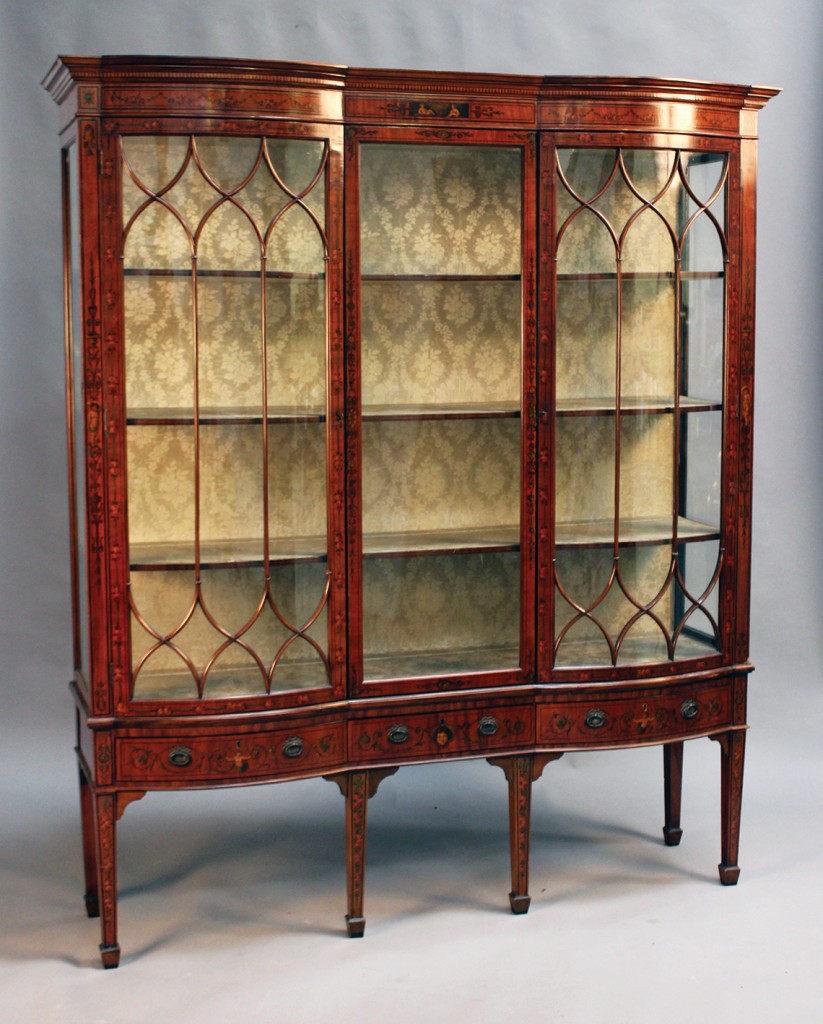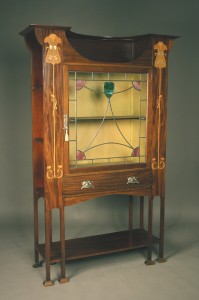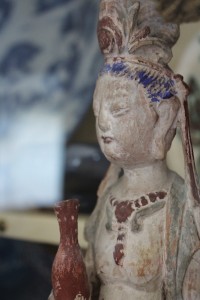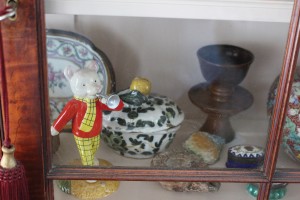
This week, as I have been visiting clients and friends along the foot of the Sussex Downs, I’ve been struck by the rich way that display cabinets and their contents give delight to their owners.

Display cabinets have been part of the English home since the 18th century. They provide the collector with the opportunity to display objects to delight the eye and our imaginations. Many of the cabinets you see at auction date from the Edwardian period. They often draw on the classical tastes of the late 18th century. The satinwood example illustrated recently sold at Toovey’s for £2000. It represents the finest craftsmanship and dates from around 1910. Painted with a scheme of rose and ribbon pendants, putti and scrolls, it is both beautiful and practical.

Not all display cabinets from the Edwardian period draw on the inspiration of the past. Take, for example, this Art Nouveau mahogany display cabinet, which would almost certainly have been sold by the famous Liberty & Co in London. There is such confidence in its design. The flared canopy and central open shelf seem to allude to an earlier age of English vernacular furniture, and yet this piece embraces the fashion for the Art Nouveau in an uncompromising way. This is articulated in its stained glass and leaded panel door and the stylized floral motifs, inlaid in a variety of woods and mother-of-pearl. The block legs and pad feet are typical of the English Art Nouveau. Today at auction, a cabinet of this quality would realise in excess of £1500.
The contents of display cabinets reveal much about their owner’s passions and interests. Like a painting, each glazed pane of a display cabinet frames a composition. The light plays on the surface of the glass, especially where it is hand-blown and subtly textured, emphasising the layered three-dimensional qualities of the arranged objects. Colour, light and shade play their part in bringing these still-life vignettes to life.
A lively mind may collect a particular field or period. I found this early 18th century Chinese carved wood figure of Guanyin, with its rich blue, ivory and ochre pigment, framed against the gentle tin glaze of a European Delft charger, decorated after the Chinese Transitional taste. Both were nestling undisturbed in a large provincial cabinet.
Of course, others will be more eclectic in their tastes. I was delighted to discover Rupert Bear blowing his own trumpet in the company of a small Roman oil lamp, a piece of the Berlin Wall and a treen vessel, framed by the glass of a wonderful satinwood cabinet.

The human activity of dwelling, being ‘rooted’, is important to our well-being. Where we live and our material possessions enable us to articulate who we are and ground us not only in the procession of our own lives but also in the broader procession of human history.
The display cabinet perfectly encases those things which tell the stories of our lives – prompts to both fond memories and knowledge, representing the patchwork quilt of our lives.
Display cabinets and their contents have the power to delight. Perhaps you need one in your life!
By Revd. Rupert Toovey. Originally published on 8th October 2014 in the West Sussex Gazette.